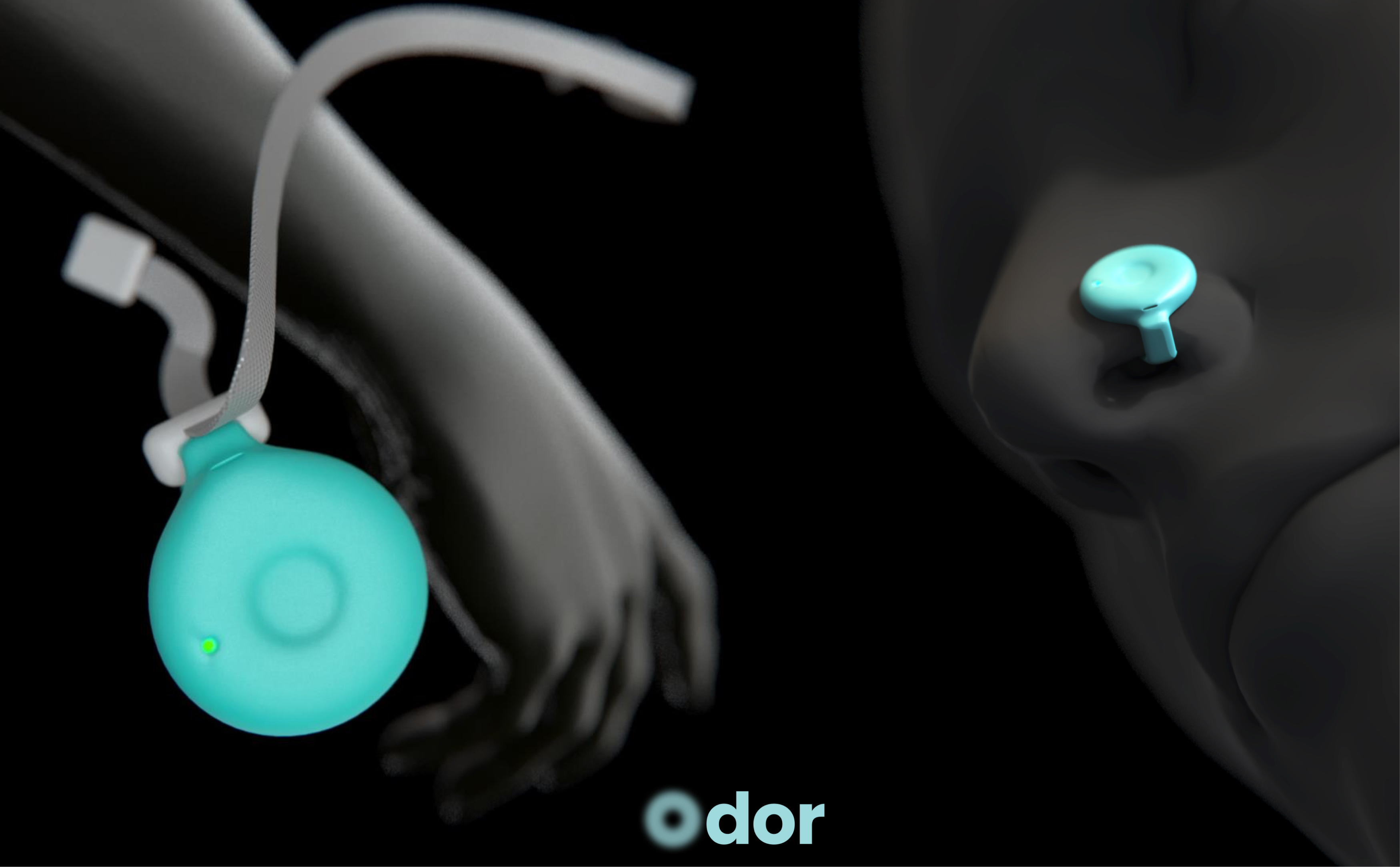Project Overview
Odor is a conceptual product that leverages the sense of smell to detect environmental information beyond sight, hearing, and touch. Developed from three experiments exploring the potential and advantages of olfactory perception, it integrates usage scenarios and user needs to help users perceive information that traditional detection methods may miss
Design Background
With technology advancing and information spreading faster than ever, countless new methods of accessing information have emerged. Yet gaps remain in how we perceive our surroundings. This project investigates whether smell can play a role in filling those gaps—exploring how olfactory cues might enhance information detection and help people better sense their environment
Methods Overview
Through user research, desk research, cultural probes, and experience mapping, I examined the role and impact of olfaction in daily life, the limitations of dominant senses such as sight, hearing, and touch, and the unique opportunities that smell offers. By identifying scenarios where olfactory cues can enhance perception, I defined application contexts for smell-based detection and developed conceptual directions that bridge human sensory gaps.

Brainstorming
My research shows that while humans primarily rely on sight, hearing, and touch to perceive their environment, these senses have inherent limitations. Smell, however, offers unique possibilities for probing new types of information and enriching environmental awareness. I am particularly interested in the opportunities that lie at the intersection of scent, environment, and detection—an area full of intriguing potential that I will explore further in the next brainstorming stage
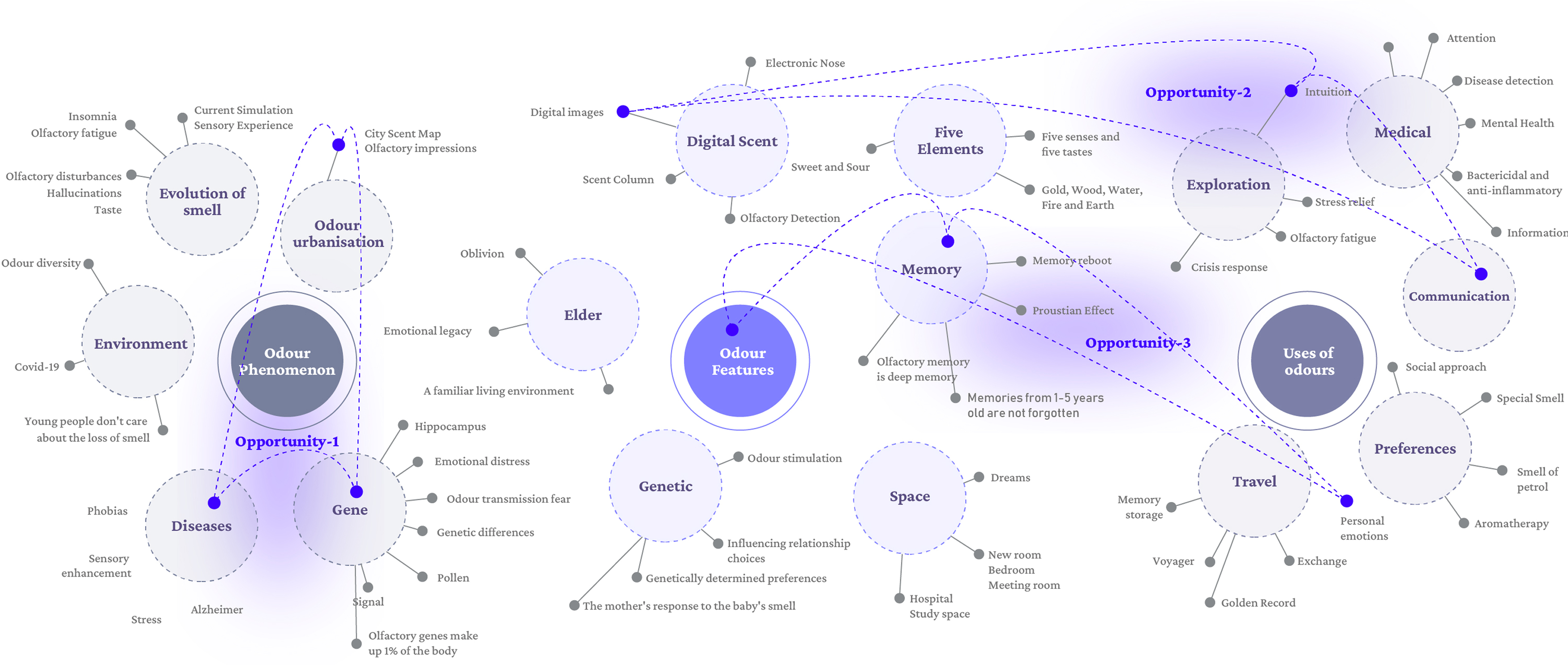
Understanding Users
- Cultural Probes: To explore the sense of smell—its role in daily life, its contribution to environmental perception, and its potential for information detection and application—I conducted a nine-day study with five participants aged 20–35 to uncover their needs and challenges.

- Data Analysis From analyzing the questionnaires and communicating with the test respondents, I gathered the following insights
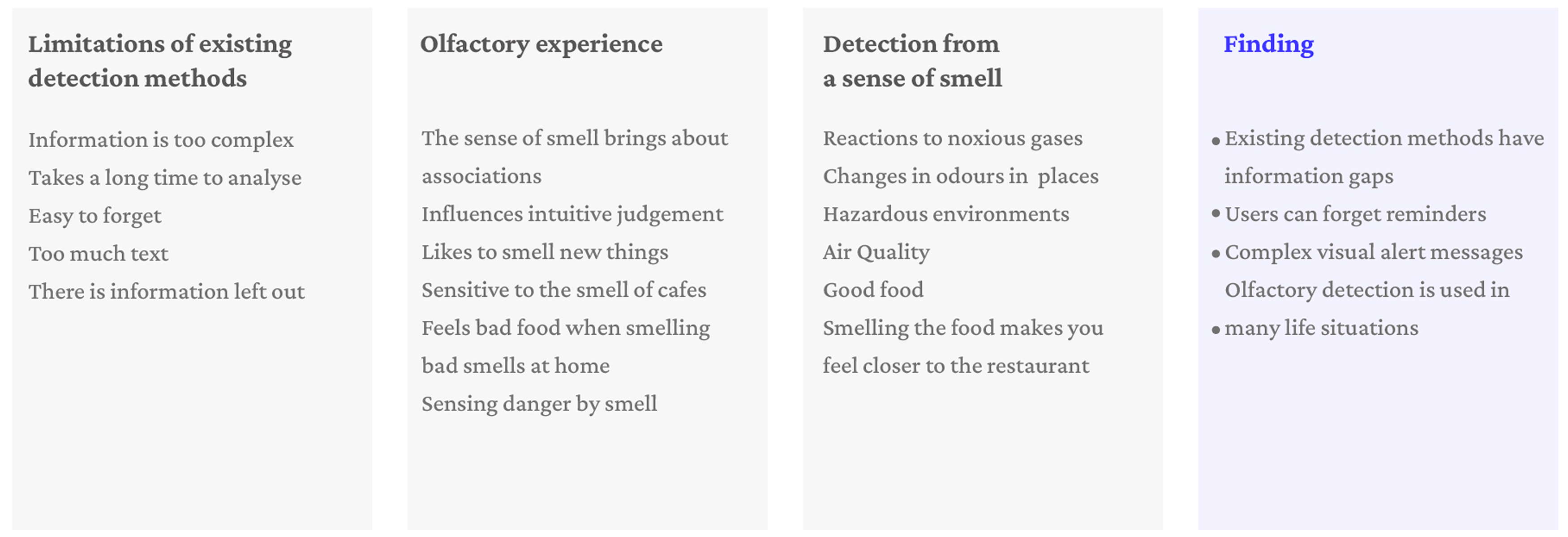
Experience Map
Building on previous research, I identified three scenarios where existing information detection methods fall short and scent could provide value. Using an experience map, I uncovered potential problems and opportunities for scent-based information detection
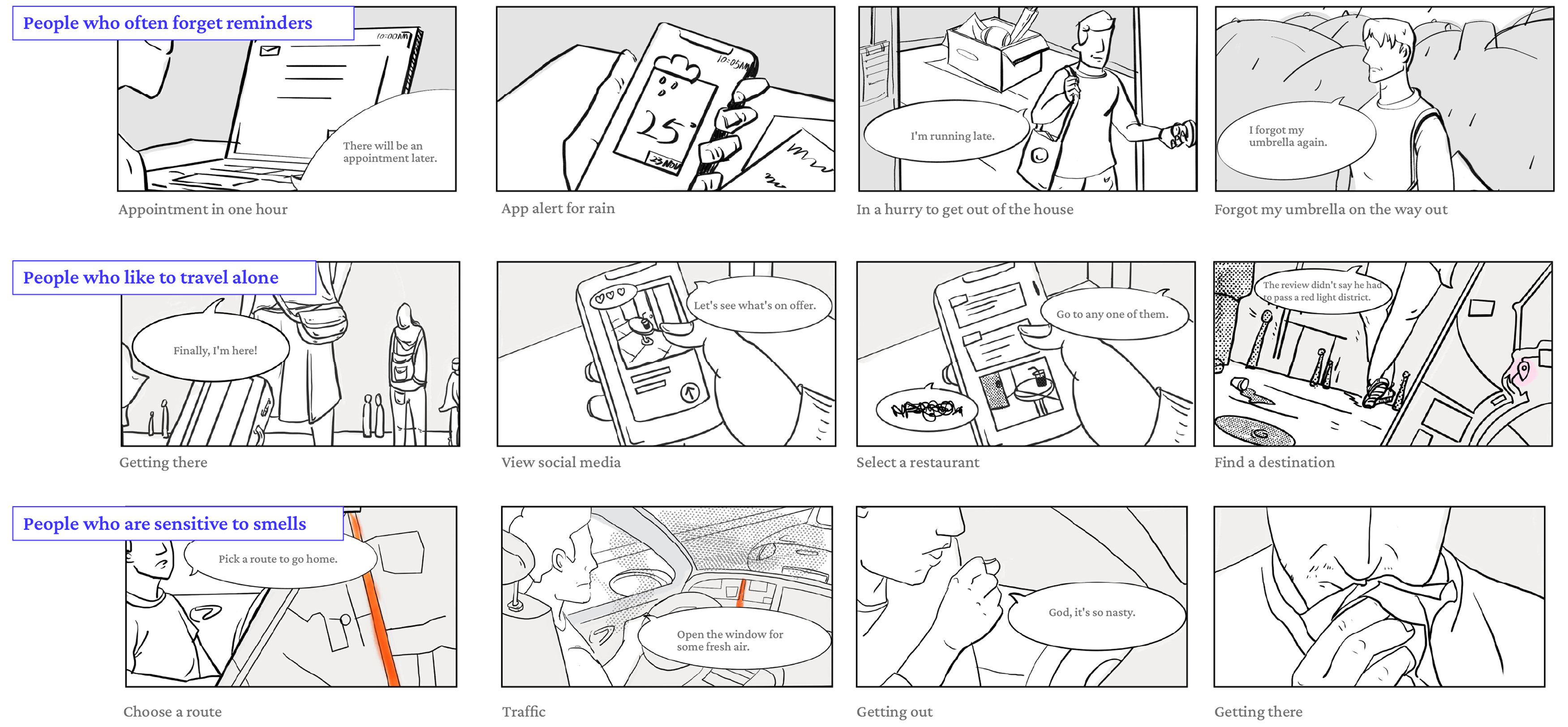
- Insights: Current information detection methods often fail—reminders are easily forgotten, critical information is missed, and the constant demand to process visual cues creates cognitive overload. This raises key questions: How can we deliver timely alerts across time and space without requiring users to check their phones? How can scent enhance information detection by triggering intuitive, environment-based responses? And how might olfactory cues create a more instinctive perception of danger, improving awareness in ways that sight, hearing, and touch alone cannot?
Experiments
Building on my research, I will focus on three distinct scenarios to test how scent-based feedback can help users detect information more effectively in different environments. The experiments will explore whether participants can perceive environmental information through scent, identify direction via smell, and gauge distance using olfactory cues. These tests aim to evaluate the potential of scent as a complementary channel for environmental awareness and information detection
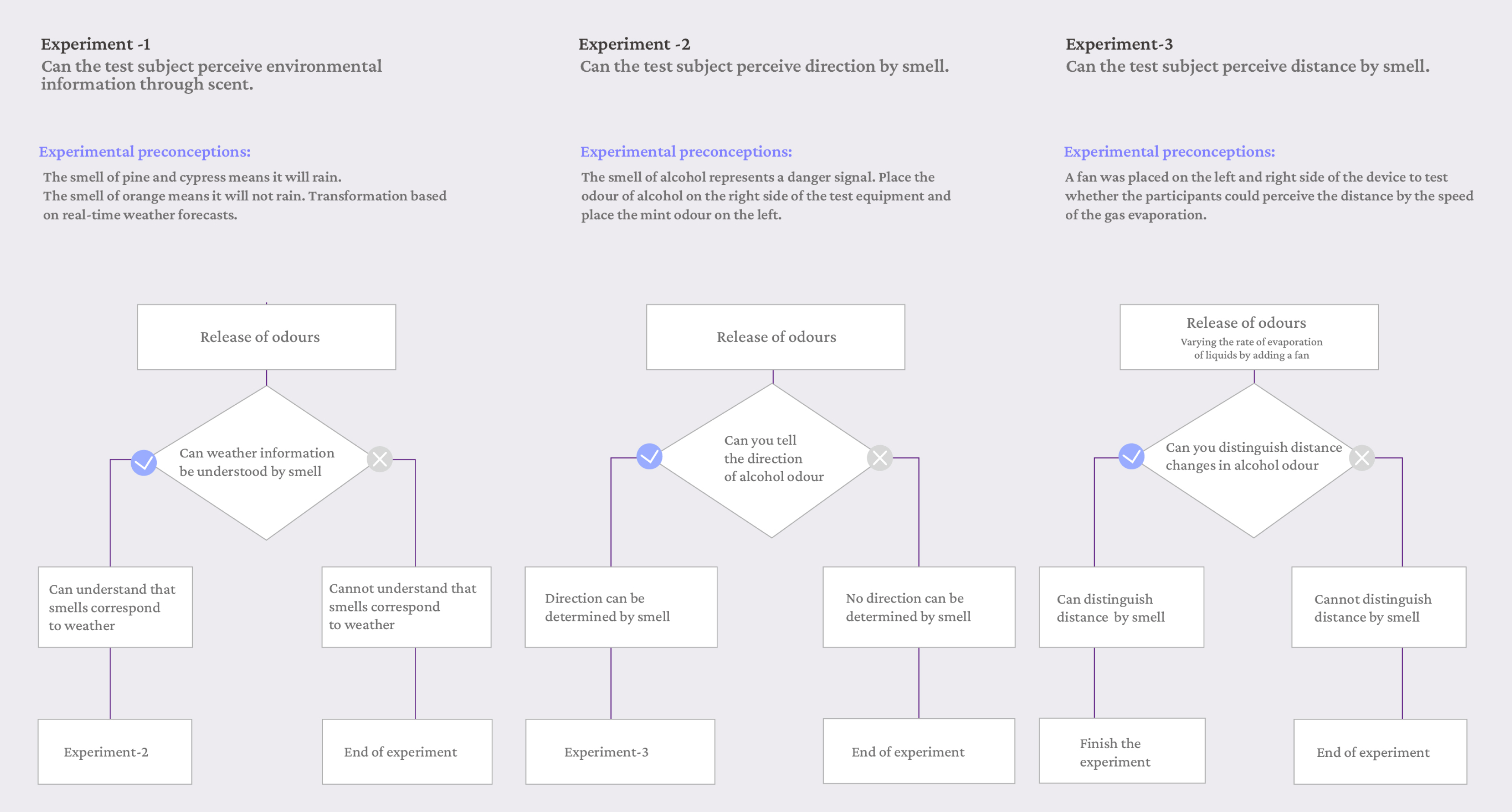
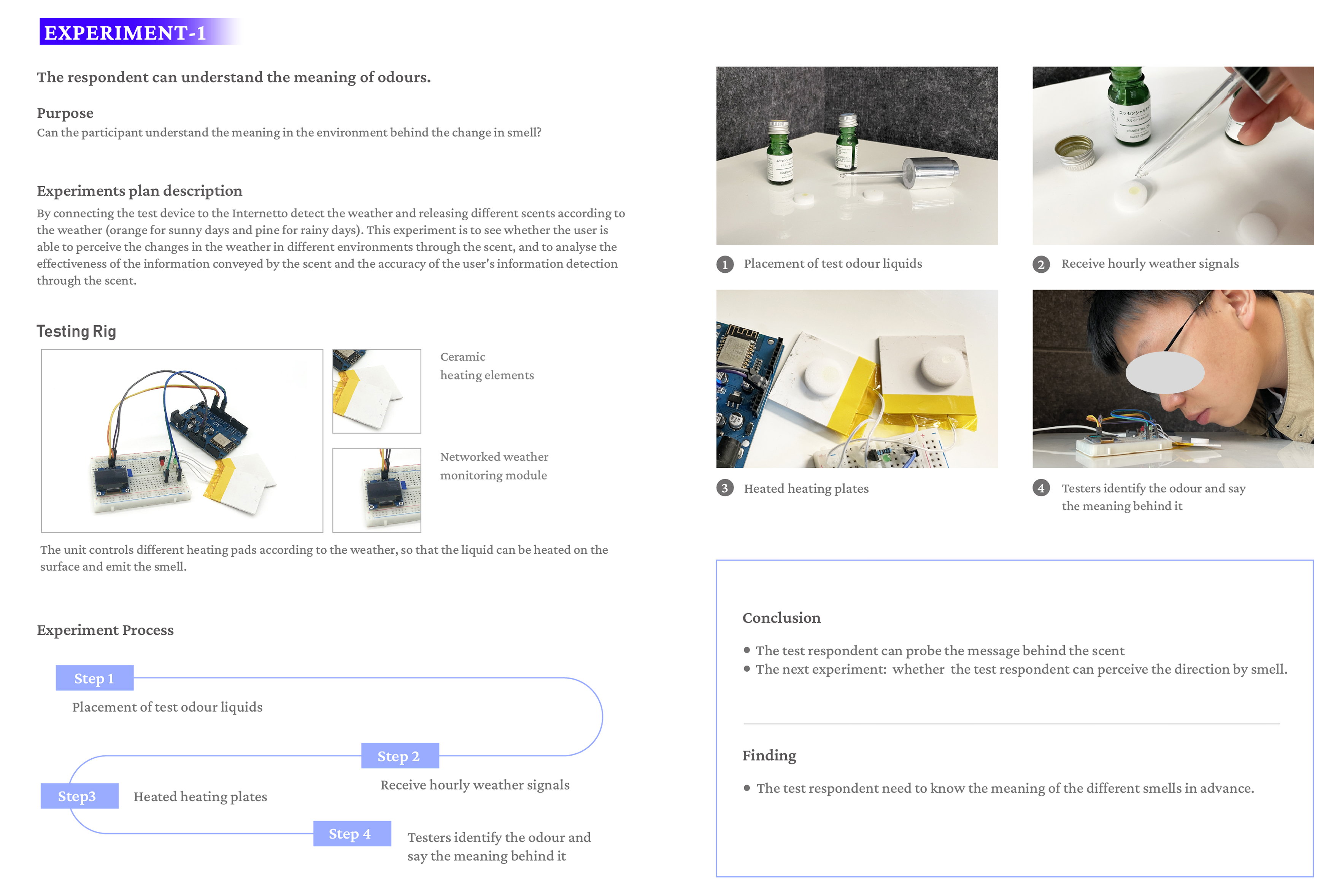
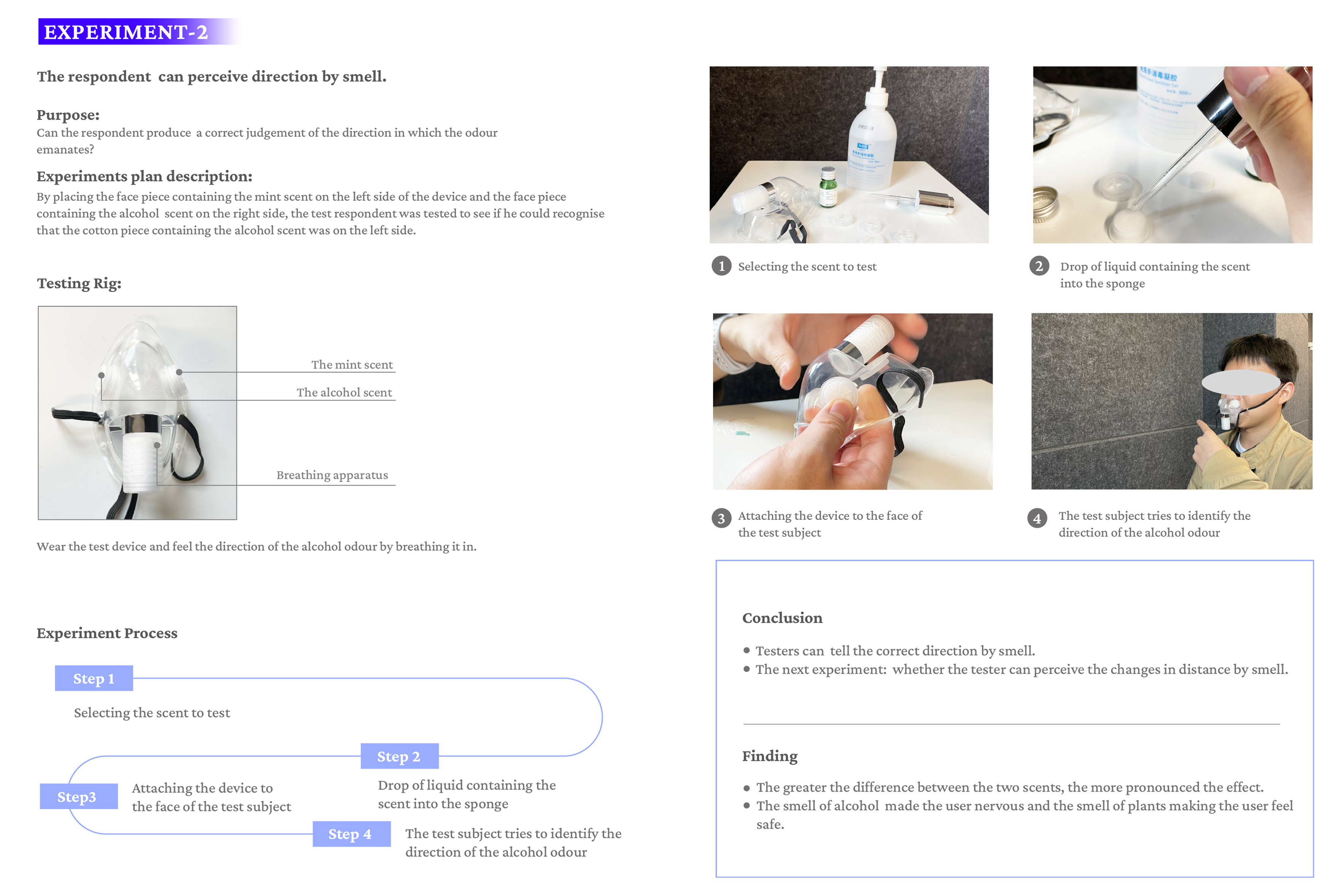
Test Feedback: Across the three experiments, participants demonstrated the ability to perceive environmental information through scent, including recognizing odour meanings, identifying their direction, and sensing changes in distance. However, these abilities were influenced by prior knowledge—participants needed to understand the classification of smells before making accurate associations. Certain scents, such as alcohol, triggered strong and specific mental associations (e.g., a broken bottle). Directional perception was generally clear, with participants noticing how wind speed and even their own breathing affected odour movement. Distance perception relied on changes in odour concentration and rate, allowing participants to sense whether they were getting closer or farther from the source, though exact distances remained difficult to judge. Challenges included long evaporation times and the need to look downward to detect some scents effectively. Iterative experiments were used to address these limitations and refine the approach
Design Concept
I designed a wearable device that uses the sense of smell to help people explore and detect information in their environment. Unlike existing digital alerts, this approach delivers information across time and space through olfactory cues, expanding the possibilities of environmental perception with assistive technology
Conceptual Design
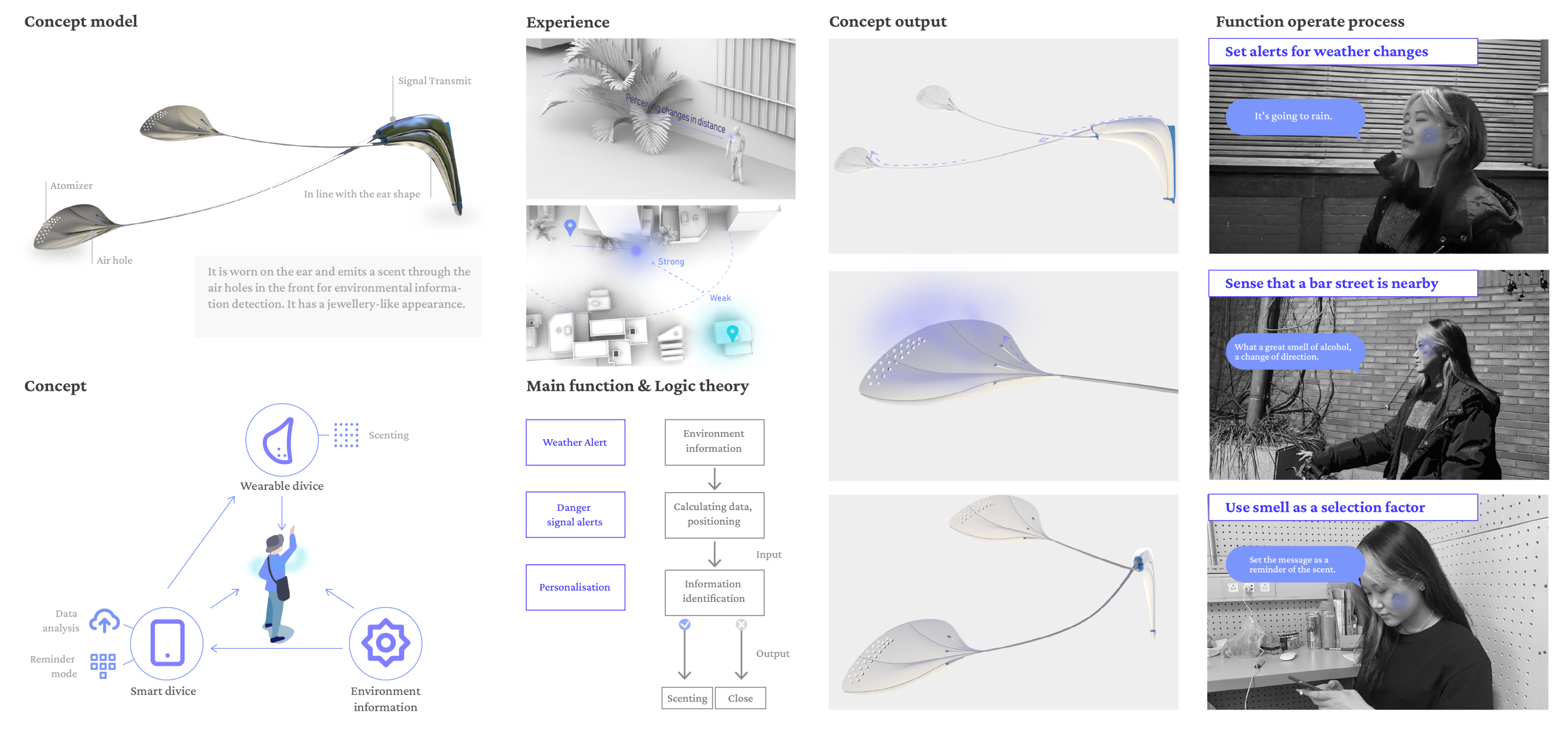
Product Design
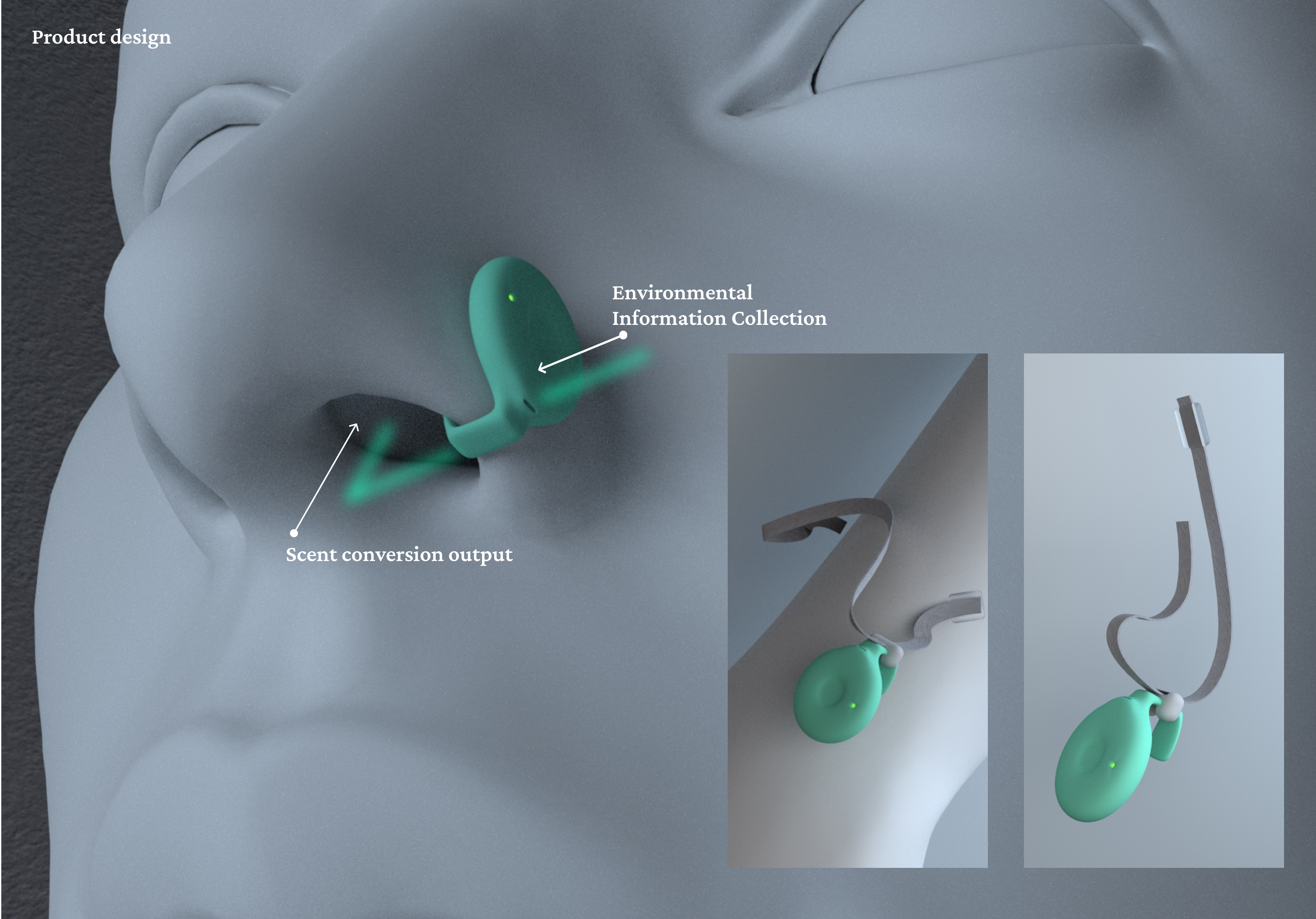
This project explored the untapped potential of smell as a channel for environmental information detection. Through user research, cultural probes, and iterative experiments, I examined how scent can convey meaning, indicate direction, and suggest distance—filling gaps left by sight, hearing, and touch. The final designs, both conceptual and product-oriented, demonstrate how olfactory cues delivered through wearable devices can offer a new, intuitive way of perceiving and responding to environmental information, opening possibilities for richer, multi-sensory interaction with the world
